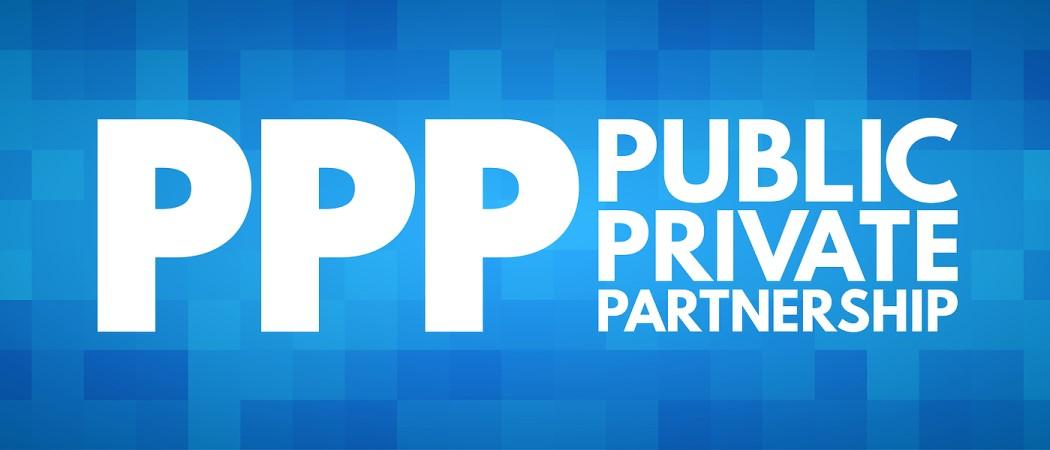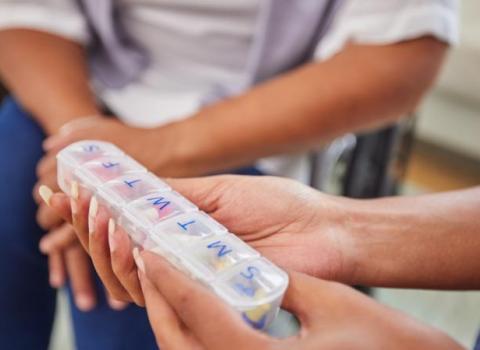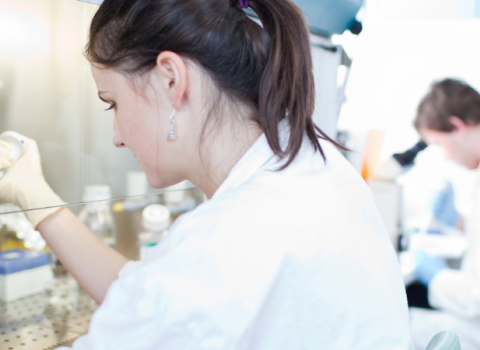After years of planning, Brussels launches the legislation to start ten big, public-private R&D ventures in health, climate and digital technologies

The European Commission put forward legislation to spend nearly €10 billion on ten big R&D partnerships on health, climate, digital and other fields, as part of its gradual roll-out of the Horizon Europe research programme.
|
Read the draft partnerships legislation |
The partnerships, linking Commission efforts with other governments and industry, are a central part of EU strategy to harness science and technology to solve global problems while also strengthening European industry – a mix of pro bono and pro-Europe policies. Since this type of formal partnership began in 2002, however, it has often prompted controversy, with critics saying it gives industry too much say or benefit at taxpayer expense.
In a statement February 23, the Commission argued that the partnerships are expected “to mobilise additional investments in support of the [green and digital] transitions, and create long-term impacts on employment, the environment and society.” The budget of nearly €10 billion EU would be matched by comparable sums from the public and private partners.
The partnerships cover several high-profile technologies, all with bigger budgets than in the past. In health, two partnerships will involve several governments and companies in European and African drug development and medical projects. In climate, four partnerships will cover green hydrogen fuels, a circular bio-based economy, clean aviation and rail networks. In digital, three partnerships will cover air traffic control, smart networks and electronic components and systems. A tenth focuses on metrology: methods and equipment for measuring and monitoring.
Horse-trading to come
Next step in the ten partnerships will be meetings of EU research and industry ministers on February 26 and again in late May, with a goal of approving the final legislation between the EU Council and Parliament by the end of this year so research can begin in early 2022. Until then, most of the partnerships have smaller, predecessor efforts operating under old legislation.
But in coming months there is likely to be a lot of horse-trading among the member states, Parliament and industry over the legislative details. One partnership, on space research promoted by Paris, has already got so politically messy that the Commission won’t try to finalise it this year.
Maria da Graça Carvalho, a Portuguese MEP leading the legislative file, said she is pleased “to learn that there will be a significant budget for the green and digital transitions. This will be very important to help the industries make the necessary adjustments … I will do my best to see them kicking-off as soon as possible. My goal will be to ensure that we will have a simple, flexible and open system for the partnerships.”
Planning for the ten big partnerships – among nearly 50 large and small that will be created in Horizon Europe – began about three years ago. The Commission recently set in motion another specialised partnership to promote European supercomputing. And in April, Commission officials expect several other partnerships to get on the road with memoranda of understanding among the partners, and formal work programmes laying out when and how individual researchers can start applying for grants.
These kind of huge, formal partnerships have been happening in the EU since 2002, with mixed results. Some have produced much-needed drug-development tools or vaccines, better air traffic and manufacturing systems. Others have been dinged by auditors as overly bureaucratic, or by politicians as too friendly to industry. In planning the seven-year, €95.5 billion Horizon Europe programme, the Commission vowed to put it all right by cutting down the number of partnerships from more than 100, giving some of them broader and bigger budgets, and simplifying by putting them all on a harmomised legal footing rather than negotiating terms separately.
Case study: African health
An example of the Commission’s ambition is the Global Health EDCTP3 partnership, a plan to combine €800 million to €1 billion of Commission money with matching sums from other governments and funders around the world to improve healthcare in Africa.
It builds on a smaller African drug development project involving the Commission, 19 EU member states and 41 African countries – as well as some of the world’s biggest pharmaceutical companies, including GlaxoSmithKline, Novartis and Johnson & Johnson. From 2014, that project has committed more than €800 million for R&D on malaria, tuberculosis, HIV and other infectious diseases, using money from the Commission and the other governments, plus cash or in-kind contributions from companies, cash from non-profits such as the Bill & Melinda Gates Foundation, and coordination with non-EU funders such as the US National Institutes of Health. Work includes clinical trials of a typhoid vaccine, better diagnostics for TB, and a series of emergency grants for COVID-19 R&D in Africa.
The reason for the effort: infectious diseases are particularly devastating in sub-Saharan Africa, causing twice the percentage of healthy years lost compared to the world averages. According to the group’s draft plans last year, more than 25 million in the region have HIV, and nine out of ten children and adolescents with HIV globally live in sub-Saharan Africa. A fourth of the world’s TB cases are in the region, and pneumonia is the top cause of death among African children. Yet, in the past, most big pharma companies haven’t prioritised African diseases – and only in the past decade or so have governments prodded them into action with grants and other forms of support.
The new project, according to the current programme’s executive director, Michael Makanga, will supplement the expanded EU budget by inviting more non-EU countries with strong biomedical R&D as partners – potentially including Japan, Canada and other nations interested in cooperating more generally with Horizon Europe.
The project will broaden its scope to put more effort into late-stage drug development in phase III and IV trials, rather than the current focus on early-stage R&D. It will also, he said, “strengthen the capacity for epidemic preparedness” with better disease detection and response systems on the continent. It will also fund work on antibiotic resistance, and target specific populations such as pregnant women, newborns, children and people with multiple ailments.
As for the pharma companies, he said, they “want the intellectual property, but where you have public funding that has gone into research and innovation we usually protect this so they are not just handed over. Further, he said, the companies bring expertise in trials and drug approvals, and “they undertake the liability that goes with the product.” Specific terms for the partnership are still under discussion, as is the final list of companies to be involved.
Other partnerships:
Innovative Health Initiative. Combines EU money with five industry associations, COCIR, EFPIA, EuropaBio, Medtech Europe and Vaccines Europe, that together will manage a wide range of health research projects. Since 2008. its two predecessor health partnerships committed €5.6 billion of public and private funds, but was seen by some as too pharma-focused. The new project will broaden to include medical technologies, diagnostics, and other treatments – basically, incorporating much of the EU health industry. In a statement, the management of its predecessor project, the Innovative Medicines Initiative, said IHI will “contribute to a holistic, citizen-centric model of health care that is fit for purpose.” A spokeswoman declined to comment further.
Key Digital Technologies. Will spend €1.8 billion of Commission money through 2027, matched by member state governments and supplemented by three electronics industry associations. The focus is semiconductors, photonics and other electronic components and systems that are viewed as essential to the EU economy, climate technologies and other EU priorities.
Circular Bio-based Europe. Will build on a prior project to develop the European biorefinery industry and the chain of goods and services that could get European consumers behind the idea of a zero-waste economy, with recycling and “circularity” designed into products from the start. The project will also work at a regional and local scale to get specific circularity projects off the ground.
Clean Hydrogen. With the industry’s Hydrogen Alliance, it will develop the use of hydrogen fuels as a cleaner energy source for cars, trucks and factories, replacing fossil fuel. The German and French governments have made hydrogen a priority for their own green plans, as in principle hydrogen fuel can be produced cleanly by using renewable energy to split water molecules and then transport it like natural gas to wherever it’s needed. But key is deploying a cheap and sustainable way to perform the electrolysis, and then make the fuel available to industry and roads. At present, most hydrogen is produced from methane, a fossil fuel.
Clean Aviation. Aims to make flying “climate-neutral” – a tall order. It will develop “ultra-efficient low-carbon aircraft” with new power systems.
Europe’s Rail. Aims to “achieve the radical transformation of the rail system” so it is more competitive with other transport modes, and “will support European technological leadership in rail.” Though rail travel, like all transport, has suffered in the pandemic, in the longer term climate researchers agree it’s a more sustainable form of transport. At the same time, the formerly dominant European high-speed rail companies and engineers have lost world market share to stiff Chinese competition.
Single European Sky ATM Research 3. Aims to make air traffic control more efficient, through new digital and networking technologies, and help the COVID-battered aviation sector recover.
Smart Networks and Services. Intended as a European answer to Chinese leadership in 5G wireless and next-generation digital networks. The very first EU research programme, from 1984, began with support for Europe’s then-nascent wifi industry which through the 1990s was number one in the world market. But since then, Chinese and Korean companies have taken top spots for network, devices and applications, and European industry has been clamouring for more EU support.
Metrology. This partnership involves only public partners, rather than private, and will operate under a different EU treaty provision from the others. For two centuries, governments have led efforts to standardise how industry measures things, from atomic weights to tumour size. The new project continues the collective EU effort, updating for new technologies such as quantum computing and artificial intelligence.





 A unique international forum for public research organisations and companies to connect their external engagement with strategic interests around their R&D system.
A unique international forum for public research organisations and companies to connect their external engagement with strategic interests around their R&D system.